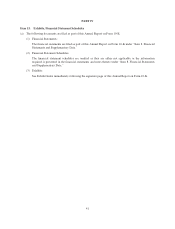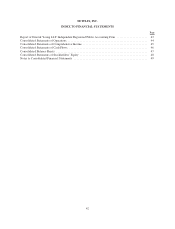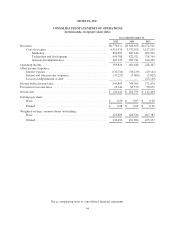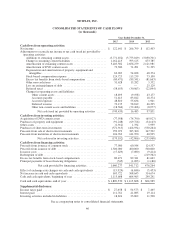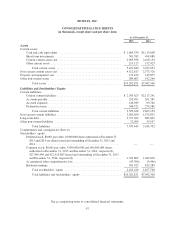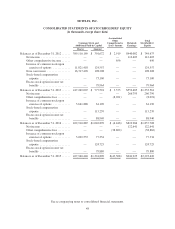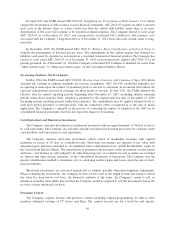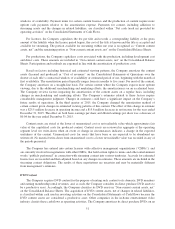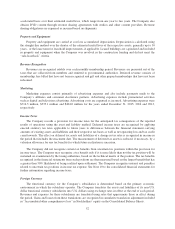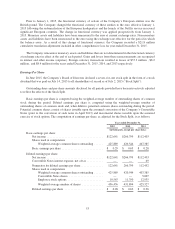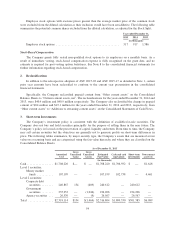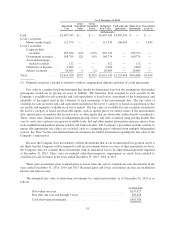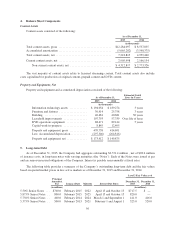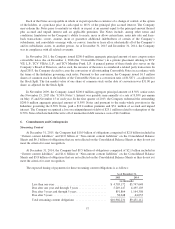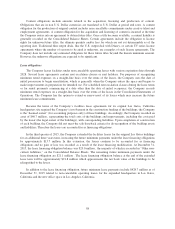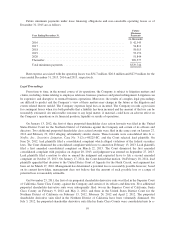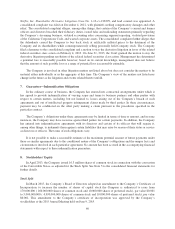NetFlix 2015 Annual Report Download - page 54
Download and view the complete annual report
Please find page 54 of the 2015 NetFlix annual report below. You can navigate through the pages in the report by either clicking on the pages listed below, or by using the keyword search tool below to find specific information within the annual report.In April 2015, the FASB issued ASU 2015-03, Simplifying the Presentation of Debt Issuance Costs which
changes the presentation of debt issuance costs in financial statements. ASU 2015-03 requires an entity to present
such costs in the balance sheet as a direct deduction from the related debt liability rather than as an asset.
Amortization of the costs will continue to be reported as interest expense. The Company elected to early adopt
ASU 2015-03 as of December 31, 2015, and retrospectively reclassifed $14.2 million of debt issuance costs
associated with the Company’s long-term debt as of December 31, 2014 from other non-current assets to long-
term debt.
In November 2015, the FASB issued ASU 2015-17, Balance Sheet Classification of Deferred Taxes to
simplify the presentation of deferred income taxes. The amendments in this update require that deferred tax
liabilities and assets be classified as noncurrent in a classified statement of financial position. The Company has
elected to early adopt ASU 2015-17 as of December 31, 2015 and retrospectively applied ASU 2015-17 to all
periods presented. As of December 31, 2014 the Company reclassified $13.4 million of deferred tax assets from
“Other current assets” to “Other non-current assets” on the Consolidated Balance Sheets.
Accounting Guidance Not Yet Adopted
In May 2014, the FASB issued ASU 2014-09, Revenue from Contracts with Customers (Topic 606) which
amended the existing accounting standards for revenue recognition. ASU 2014-09 establishes principles for
recognizing revenue upon the transfer of promised goods or services to customers, in an amount that reflects the
expected consideration received in exchange for those goods or services. In July 2015, the FASB deferred the
effective date for annual reporting periods beginning after December 15, 2017 (including interim reporting
periods within those periods). Early adoption is permitted to the original effective date of December 15, 2016
(including interim reporting periods within those periods). The amendments may be applied retrospectively to
each prior period presented or retrospectively with the cumulative effect recognized as of the date of initial
application. The Company is currently in the process of evaluating the impact of adoption of the ASU on its
consolidated financial statements, but does not expect the impact to be material.
Cash Equivalents and Short-term Investments
The Company considers investments in instruments purchased with an original maturity of 90 days or less to
be cash equivalents. The Company also classifies amounts in transit from payment processors for customer credit
card and debit card transactions as cash equivalents.
The Company classifies short-term investments, which consist of marketable securities with original
maturities in excess of 90 days as available-for-sale. Short-term investments are reported at fair value with
unrealized gains and losses included in “Accumulated other comprehensive loss” within Stockholders’ equity in
the Consolidated Balance Sheets. The amortization of premiums and discounts on the investments, realized gains
and losses, and declines in value judged to be other-than-temporary on available-for-sale securities are included
in “Interest and other income (expense)” in the Consolidated Statements of Operations. The Company uses the
specific identification method to determine cost in calculating realized gains and losses upon the sale of short-
term investments.
Short-term investments are reviewed periodically to identify possible other-than-temporary impairment.
When evaluating the investments, the Company reviews factors such as the length of time and extent to which
fair value has been below cost basis, the financial condition of the issuer, the Company’s intent to sell, or
whether it would be more likely than not that the Company would be required to sell the investments before the
recovery of their amortized cost basis.
Streaming Content
The Company acquires, licenses and produces content, including original programming, in order to offer
members unlimited viewing of TV shows and films. The content licenses are for a fixed fee and specific
50



